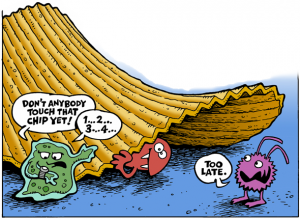Since high school I have always been told I “dress nice.” Most of my classmates back then usually dressed in athletic shorts and t-shirts. This trend is still more often true than not in college. I knew then and I know now that my fashion choice tends to be a little more complex than athletic shorts and t-shirts. I do this because I think “dressing nice” is respectable and it also helps boost my self-esteem. This got me wondering how much the way we dress actually affects our self-esteem? For me, I believe it helps a lot, but what about everyone else? Would “dressing nice” increase the self-esteem of people a minute amount, a lot, or not at all? If so, why do people decide not to “dress nice?” Is my assumption that people wearing athletic shorts and t-shirts is not “dressing nice” wrong? Do people consider that “dressing nice?” I will try to answer as many as these questions as I can, but this is my hypothesis: How much does the way we dress affect our self-esteem?
The first article I found focused on how a person dresses affects the self-esteem of elderly women in nursing homes. This experimental study found that elderly women consistently reported feeling more confident when they would feel they were dressed nicer than normal (Pensiero). Another study that also used older women (55+ years old) found that the way they dress and their overall appearance had a direct affect on their self-esteems. Appearing poorly dressed, having messy hair, and having poorly done make-up were all shown to have negative affects on a person’s self-esteem, while appearing well dressed, having a good haircut, and having well-done make-up resulted in higher self-esteems (Joung). I think it would be acceptable of us to apply both these findings to people other than the well-aged and elderly. We are all people with volatile self-esteems that can constantly increase and decrease. Would it be so much of a risk to try this method if you are lacking in self-confidence?
The third scholarly article I reviewed did their research on the fashion and self-esteem of Indian women. It found that wearing prestigious fashion brands increased the self-esteem and perceived social status of the women in the sample (Khare). Their results were also reported as having a p-value of .02 (or 2%) which is scientifically significant. This study is yet another example that supplies more evidence towards the claim that the way people dress affects their self-esteem. Why is it that we connect the way we dress with our social status and self-esteem? Maybe it is because we live in a world where we rely on other peoples’ opinions to judge ourselves. It also could be that we strive and ache to live and look like the models and celebrities we see every day. Is this a naturally occurring phenomena? Or is this a result of our society that taps into our innate desires to sell products?
Conclusion
All three of the articles I discussed focus on slightly different aspects with slightly different participant pools, but they all touched on the overarching theme of clothing choice and self-esteem. They all provided evidence to support my thesis that the way we dress affects our self-esteems. So if you ever feel yourself getting a little down, put on your favorite button-down, lace up your nicest shoes, and strut your stuff.
Works Cited:
Pensiero, Marcine, and Mary Adams. “Dress and Self-Esteem.” Journal of Gerontological Nursing, vol. 13, no. 10, 1987, pp. 10.
Joung, Hyun-Mee, and Nancy J. Miller. “Factors of Dress Affecting Self-Esteem in Older Females.” Journal of Fashion Marketing and Management: An International Journal, vol. 10, no. 4, 2006, pp. 466-478. doi:10.1108/13612020610701983.
Khare, Arpita, Ankita Mishra, and Ceeba Parveen. “Influence of Collective Self Esteem on Fashion Clothing Involvement among Indian Women.” Journal of Fashion Marketing and Management, vol. 16, no. 1, 2012, pp. 42-63. doi:http://dx.doi.org.ezaccess.libraries.psu.edu/10.1108/13612021211203023.
Pictures (in order of appearance):
































